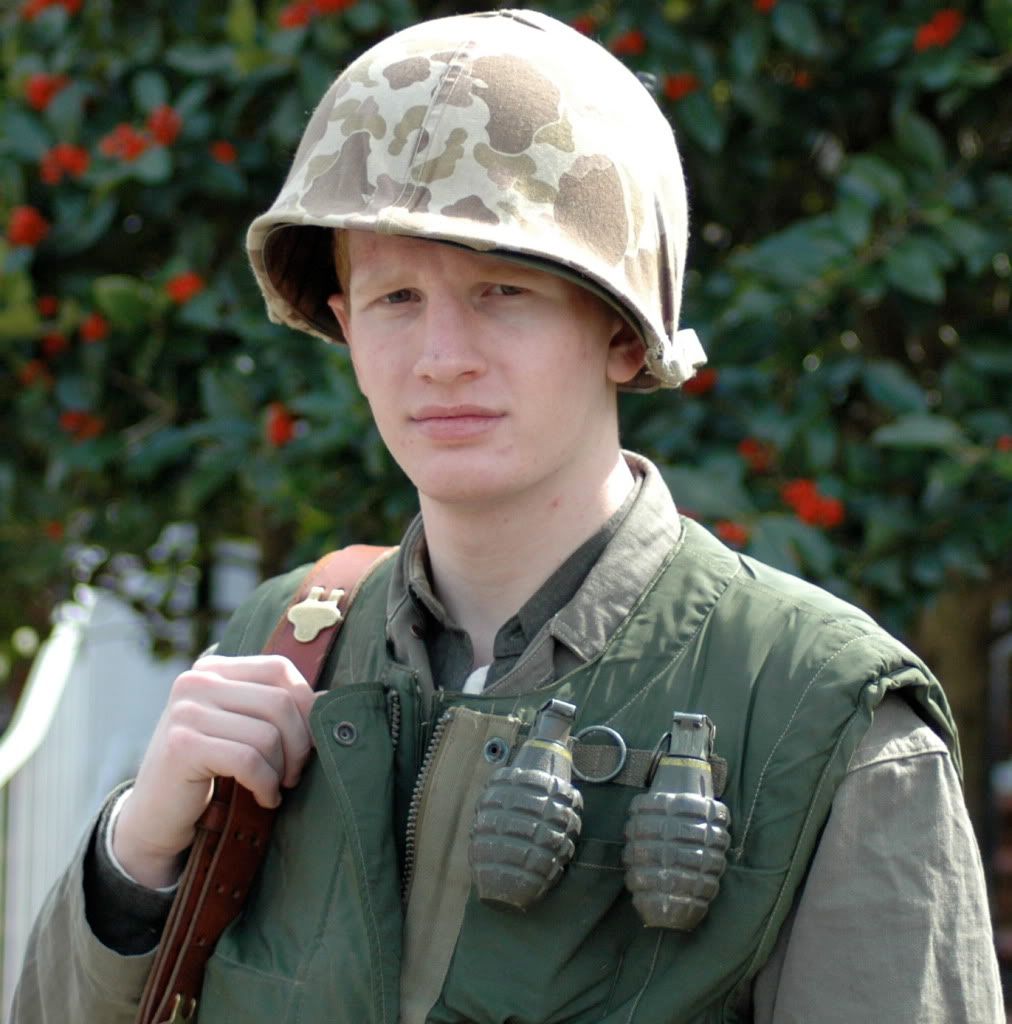Post by redjoshman on Mar 1, 2010 1:47:13 GMT -5
I thought this information might prove helpful.
This is from the book The Outpost War: U.S. Marines in Korea, Vol. 1: 1952 by Lee Banllenger
"Unlikes its Army counterparts, the 1st Marine Division stayed up to strength and did so with well-trained, ardent young junior officers and enlisted men sent to Korea from Marine bases in the United States. The Marines had no units in Germany or mobilized National Guard divisions to draw off quality personnel. A full-strength Marine Division, structured for air-ground operations and amphibious assaults, numbered around twenty-five thousand officers and men, compared with an Army infantry division whose strength was around nineteen thousand.
For reasons that mystified even President-elect and retired general Dwight D. Eisenhower, the Army could not keep its combat divisions at full strength, and it adopted the expedient of using South Korean conscripts as infantrymen in its organic units. The Koreans, known as KATUSAs(from "Korean Augmentation to the U.S. Army") proved to be a mixed blessing; many of them served useful purposes, but few became first-rate fighters. In 1952, every Army division still had as many as 2,500 KATUSAs, who made its infantry a little less effective than it might have been. (Even today, the real soldiers of the South Korean army regard KATUSAs as slackers who take American rations and other material rewards while they enjoy relaxed American discipline and easy training.)"
also
"As the best division in the U.S. I Corps, the Commonwealth Division still held its advanced positions, both flanks tenuously anchored on the Imjin-gang, in the spring of 1952. Maj. Gen. A. J. H. Cassels, a stubborn Scot, was very particular about what units he had on his flanks if his division was to defend the Jamestown Line. He had little confidence in the soldierly practices of the U.S. Army, from its generalship to its lax practices of fortifications, security, and intelligence gathering and assessment. Cassels actually preferred to have the 1st ROK Division on his flank rather than a U.S. Army Division. Under British pressure, Van Fleet retained the 1st ROK division in the I Corps, but shifted it to a sector on the right of the Commonwealth Division. The 1st Marine Division went into the sector of the 1st ROK Division when the Marines went west in 1952. For the remainder of the war, the Commonwealth Division and the 1st Marine Division operated with mutual respect to hold their portion of the Jamestown Line. Both divisions believed they were much better off without Army divisions on their flanks, and both worked well with the ROK units within the U.S. I Corps."
Hoped this proved informative.
-Josh
This is from the book The Outpost War: U.S. Marines in Korea, Vol. 1: 1952 by Lee Banllenger
"Unlikes its Army counterparts, the 1st Marine Division stayed up to strength and did so with well-trained, ardent young junior officers and enlisted men sent to Korea from Marine bases in the United States. The Marines had no units in Germany or mobilized National Guard divisions to draw off quality personnel. A full-strength Marine Division, structured for air-ground operations and amphibious assaults, numbered around twenty-five thousand officers and men, compared with an Army infantry division whose strength was around nineteen thousand.
For reasons that mystified even President-elect and retired general Dwight D. Eisenhower, the Army could not keep its combat divisions at full strength, and it adopted the expedient of using South Korean conscripts as infantrymen in its organic units. The Koreans, known as KATUSAs(from "Korean Augmentation to the U.S. Army") proved to be a mixed blessing; many of them served useful purposes, but few became first-rate fighters. In 1952, every Army division still had as many as 2,500 KATUSAs, who made its infantry a little less effective than it might have been. (Even today, the real soldiers of the South Korean army regard KATUSAs as slackers who take American rations and other material rewards while they enjoy relaxed American discipline and easy training.)"
also
"As the best division in the U.S. I Corps, the Commonwealth Division still held its advanced positions, both flanks tenuously anchored on the Imjin-gang, in the spring of 1952. Maj. Gen. A. J. H. Cassels, a stubborn Scot, was very particular about what units he had on his flanks if his division was to defend the Jamestown Line. He had little confidence in the soldierly practices of the U.S. Army, from its generalship to its lax practices of fortifications, security, and intelligence gathering and assessment. Cassels actually preferred to have the 1st ROK Division on his flank rather than a U.S. Army Division. Under British pressure, Van Fleet retained the 1st ROK division in the I Corps, but shifted it to a sector on the right of the Commonwealth Division. The 1st Marine Division went into the sector of the 1st ROK Division when the Marines went west in 1952. For the remainder of the war, the Commonwealth Division and the 1st Marine Division operated with mutual respect to hold their portion of the Jamestown Line. Both divisions believed they were much better off without Army divisions on their flanks, and both worked well with the ROK units within the U.S. I Corps."
Hoped this proved informative.
-Josh
